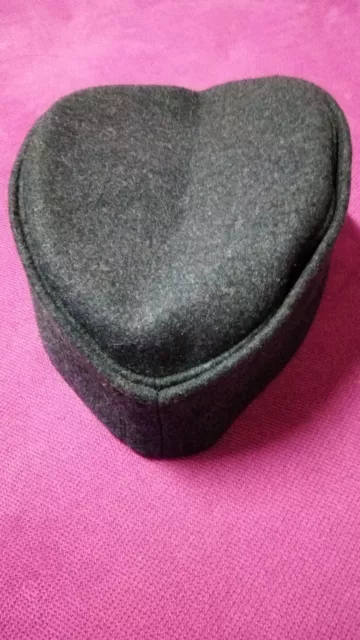Sajkaca - Serbian traditional hat handmade navy blue
Seller:  queen_elizabeth ✉️ (1,824) 98.8%,
Location: Nis, Serbia, RS,
Ships to: WORLDWIDE,
Item: 113189279986
Sajkaca - Serbian traditional hat handmade navy blue. The
šajkača (Serbian Cyrillic: шајкача, pronounced [ʃǎjkatʃa]) is the
Serbian national hat or cap. Traditionally worn by men in the Serbian
countryside, it is named after Serb river troops known as šajkaši, who
protected the Austrian Empire against the Ottoman Turks in the 18th
century. A popular nationalist symbol in Serbia since the beginning of
the early 20th century, it is typically black, grey or green in colour
and is usually made of soft, homemade cloth. It became widely worn by
Serb men during the First Serbian Uprising and was a key component in
the uniform of the Serbian military from the beginning of the 19th
century until the end of the 20th century. Today, it is mostly worn by
elderly men in rural communities. The šajkača is a traditional
hat worn by men in the Serbian countryside. It is the national hat of
Serbia and is believed to have originated in the Serbian region of Banat
during the 18th century, when šajkaši (Serb river troops in the service
of the Austrian Empire) guarded the Danube and Sava rivers against the
Ottoman Empire and wore caps in the shape of an overturned chaika
(Serbian: Šajka, Шајка) boat. It became widely worn amongst Serbs at the
time of the First Serbian Uprising, when the men of Serbian
revolutionary Karađorđe Petrović began discarding their Turkish fezzes
in favour of the cap. The typical cap of peasants from the
Šumadija region of Serbia, the šajkača eventually acquired a dual
purpose: during times of peace it was worn in the countryside, and in
wartime it became part of the standard Serbian military uniform. During
World War I, the cap was regularly worn by the soldiers of the Kingdom
of Serbia. Serbia was eventually overrun by a combined Austro-Hungarian,
German and Bulgarian invasion in 1915, and in 1916 the wearing of the
šajkača, alongside other Serbian folk attire, was outlawed by Bulgarian
authorities in the wake of the Bulgarian occupation of southern Serbia.
After the war, the wearing of the hat in Bosnia was made obligatory by
Serbian authorities in place of the Turkish fez. Serbian Partisans wearing the šajkača (1941). During
World War II, the šajkača was the standard hat worn by Serbian Chetnik
irregulars in the Axis-occupied Kingdom of Yugoslavia. It was also worn
by Serbian Partisans. After the war, it was replaced by the Titovka cap
in the armed forces of communist Yugoslavia. The šajkača was worn
by Serb soldiers during the breakup of Yugoslavia. Bosnian Serb
reservists and paramilitaries wore the cap during the 1992–95 Bosnian
War, and it was later adopted by Bosnian Serb forces to be the official
headgear of the Army of Republika Srpska (Serbian: Vojska Republike
Srpske, VRS). Following the 1991 Battle of Vukovar, fought during the
Croatian War of Independence, Croatian Serb authorities erected
gravestones to the Serb soldiers who were killed fighting for the city.
These were originally topped with sculptural evocations of the šajkača
cap. After Vukovar's reintegration into Croatia the gravestones were
repeatedly vandalized, leading the Serb community in the town to replace
them with more neutral gravestones without any overt military
connotations. The 1999 NATO bombing of Yugoslavia saw McDonald's chains
in Serbia promote their products by distributing posters and lapels
which depicted the šajkača standing atop the golden arches of the
McDonald's logo in an attempt to bolster Serbian national pride. The
šajkača has been a popular nationalist symbol in Serbia since the
beginning of the 20th century. It is commonly worn by elderly men in the
Serbian countryside, whereas Serbian youth wear traditional costumes
only for folklore concerts.Designed with a V-shaped top in the form of
an overturned chaika, the šajkača is narrow and typically black or grey
in colour.[16] It is usually made of soft, homemade cloth and is worn
without any symbols during peacetime. During times of war, cockades
featuring the Serbian double-headed eagle and the motto Only Unity Saves
the Serbs are often seen on the cap.[3] The šajkača worn by Serbian
soldiers during World War I had a non-reflecting peak and was topped
with a royal monogram
queen_elizabeth ✉️ (1,824) 98.8%,
Location: Nis, Serbia, RS,
Ships to: WORLDWIDE,
Item: 113189279986
Sajkaca - Serbian traditional hat handmade navy blue. The
šajkača (Serbian Cyrillic: шајкача, pronounced [ʃǎjkatʃa]) is the
Serbian national hat or cap. Traditionally worn by men in the Serbian
countryside, it is named after Serb river troops known as šajkaši, who
protected the Austrian Empire against the Ottoman Turks in the 18th
century. A popular nationalist symbol in Serbia since the beginning of
the early 20th century, it is typically black, grey or green in colour
and is usually made of soft, homemade cloth. It became widely worn by
Serb men during the First Serbian Uprising and was a key component in
the uniform of the Serbian military from the beginning of the 19th
century until the end of the 20th century. Today, it is mostly worn by
elderly men in rural communities. The šajkača is a traditional
hat worn by men in the Serbian countryside. It is the national hat of
Serbia and is believed to have originated in the Serbian region of Banat
during the 18th century, when šajkaši (Serb river troops in the service
of the Austrian Empire) guarded the Danube and Sava rivers against the
Ottoman Empire and wore caps in the shape of an overturned chaika
(Serbian: Šajka, Шајка) boat. It became widely worn amongst Serbs at the
time of the First Serbian Uprising, when the men of Serbian
revolutionary Karađorđe Petrović began discarding their Turkish fezzes
in favour of the cap. The typical cap of peasants from the
Šumadija region of Serbia, the šajkača eventually acquired a dual
purpose: during times of peace it was worn in the countryside, and in
wartime it became part of the standard Serbian military uniform. During
World War I, the cap was regularly worn by the soldiers of the Kingdom
of Serbia. Serbia was eventually overrun by a combined Austro-Hungarian,
German and Bulgarian invasion in 1915, and in 1916 the wearing of the
šajkača, alongside other Serbian folk attire, was outlawed by Bulgarian
authorities in the wake of the Bulgarian occupation of southern Serbia.
After the war, the wearing of the hat in Bosnia was made obligatory by
Serbian authorities in place of the Turkish fez. Serbian Partisans wearing the šajkača (1941). During
World War II, the šajkača was the standard hat worn by Serbian Chetnik
irregulars in the Axis-occupied Kingdom of Yugoslavia. It was also worn
by Serbian Partisans. After the war, it was replaced by the Titovka cap
in the armed forces of communist Yugoslavia. The šajkača was worn
by Serb soldiers during the breakup of Yugoslavia. Bosnian Serb
reservists and paramilitaries wore the cap during the 1992–95 Bosnian
War, and it was later adopted by Bosnian Serb forces to be the official
headgear of the Army of Republika Srpska (Serbian: Vojska Republike
Srpske, VRS). Following the 1991 Battle of Vukovar, fought during the
Croatian War of Independence, Croatian Serb authorities erected
gravestones to the Serb soldiers who were killed fighting for the city.
These were originally topped with sculptural evocations of the šajkača
cap. After Vukovar's reintegration into Croatia the gravestones were
repeatedly vandalized, leading the Serb community in the town to replace
them with more neutral gravestones without any overt military
connotations. The 1999 NATO bombing of Yugoslavia saw McDonald's chains
in Serbia promote their products by distributing posters and lapels
which depicted the šajkača standing atop the golden arches of the
McDonald's logo in an attempt to bolster Serbian national pride. The
šajkača has been a popular nationalist symbol in Serbia since the
beginning of the 20th century. It is commonly worn by elderly men in the
Serbian countryside, whereas Serbian youth wear traditional costumes
only for folklore concerts.Designed with a V-shaped top in the form of
an overturned chaika, the šajkača is narrow and typically black or grey
in colour.[16] It is usually made of soft, homemade cloth and is worn
without any symbols during peacetime. During times of war, cockades
featuring the Serbian double-headed eagle and the motto Only Unity Saves
the Serbs are often seen on the cap.[3] The šajkača worn by Serbian
soldiers during World War I had a non-reflecting peak and was topped
with a royal monogram
- Condition: New
- Country/Region of Manufacture: Serbia
PicClick Insights - Sajkaca - Serbian traditional hat handmade navy blue PicClick Exclusive
- Popularity - 20 watchers, 0.0 new watchers per day, 2,081 days for sale on eBay. Super high amount watching. 18 sold, 2 available.
- Best Price -
- Seller - 1,824+ items sold. 1.2% negative feedback. Top-Rated Plus! Top-Rated Seller, 30-day return policy, ships in 1 business day with tracking.
People Also Loved PicClick Exclusive
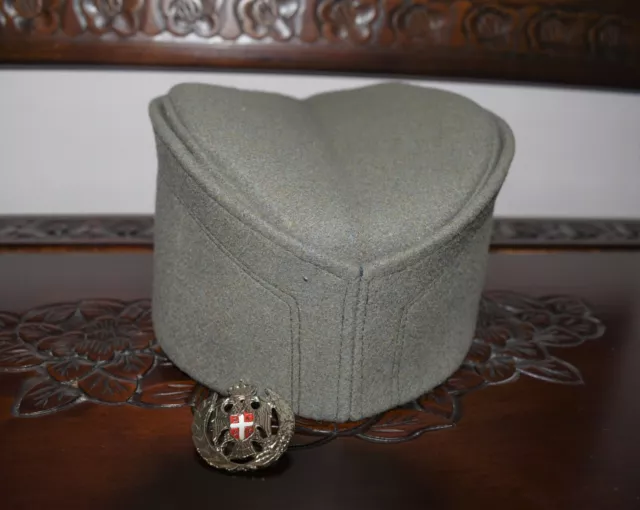
Sajkaca - Serbian traditional hat handmade with kokarda
$27.52 Buy It Now 28d 13h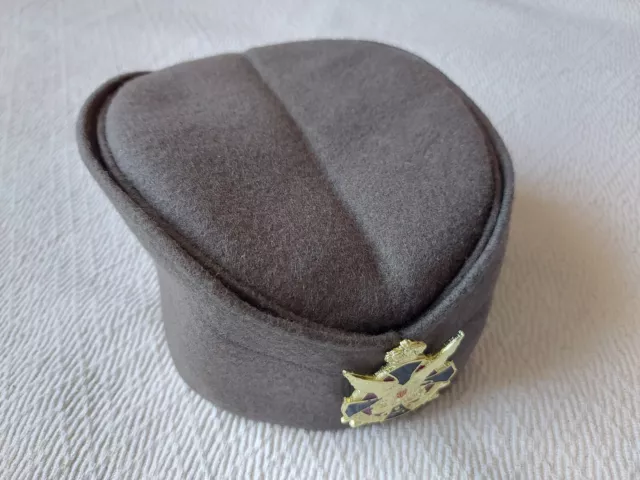
Handmade Serbian Traditional Cap Sajkaca With Kokarda - Olive-green Color 58 cm
$44.99 Buy It Now 4d 17h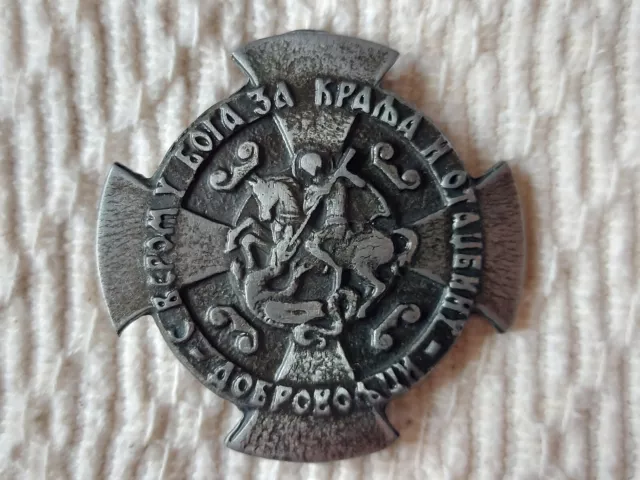
Serbian Metal Badge Replica
$21.99 Buy It Now 23d 0h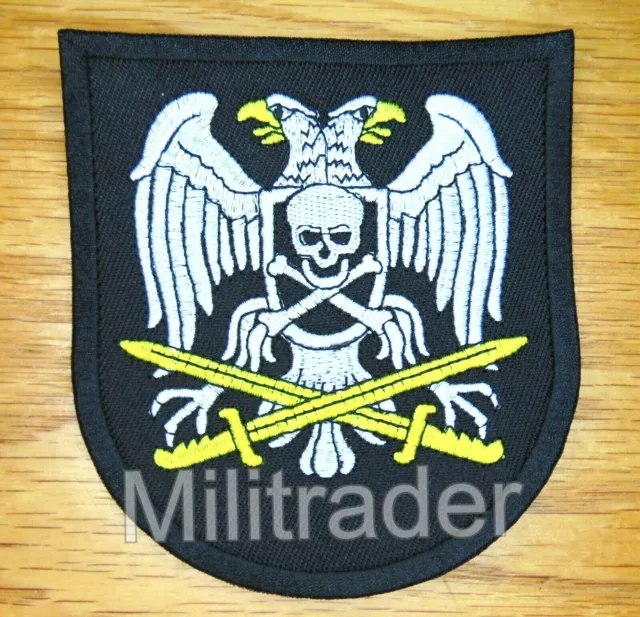
Serbian Chetnik Special Forces With Faith in God Freedom or Death Patch
$8.95 Buy It Now 9h 44m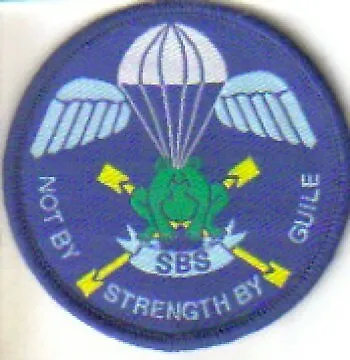
SPECIAL BOAT SQUADRON Badge SBS Traditional NAVY BLUE
$14.99 Buy It Now 2h 55m 3 watchers
3 watchers Sajkaca - Serbian traditional hat handmade with kokarda
Sajkaca - Serbian traditional hat handmade with kokarda$40.85$38.40 Buy It Now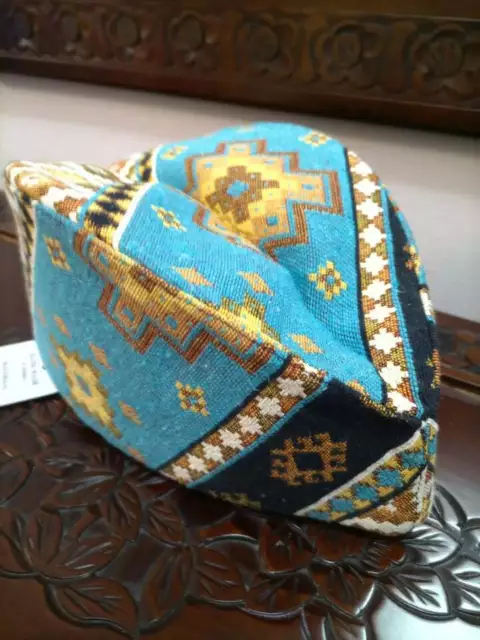
 Sajkaca Serbian traditional hat handmade modern design made from golden hands 33
Sajkaca Serbian traditional hat handmade modern design made from golden hands 33$47.20$44.37 Buy It Now 1 watcher
1 watcher Sajkaca Serbian traditional hat handmade modern design made from golden hands 32
Sajkaca Serbian traditional hat handmade modern design made from golden hands 32$47.20$44.37 Buy It Now
